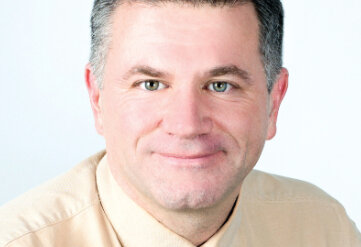Seeking post-pandemic healing in the woods
A cold wind, as loud as a trumpet, whipped across the summit of Mount Marcy, New York’s highest peak in the Adirondacks, on Aug. 17. I could see only feet in front of me, because the mountain, at 5,344 feet above sea level, was enveloped by clouds. Then a light rain started to patter across the rocky slab at my feet.
I was in a dreamscape, surrounded by massive boulders and tall piles of rocks called cairns, intended to guide hikers through stormy conditions. Then, out of the fog, two 20-something hikers appeared like apparitions, wearing nothing more than shorts, T-shirts and sneakers, each carrying but one small water bottle.
The two moved across the steep, slippery rock like cats, seemingly unfazed by the increasingly concerning weather. One pulled out a short joint and inhaled it all at once. He and his hiking partner stood at Marcy’s highest point and joked that they were the highest men in New York. Then they asked if we — my son, Andrew, my soon-to-be son-in-law, Matteo, and I — would like our photo taken at the summit. We did, and the fellow toking the joint obliged.
The pair were from Massachusetts, but mostly hiked in New Hampshire, they said. They had never climbed Mount Marcy before. I remarked that I had last made the ascent 45 years ago.
“What were you, 3?” the smoker asked.
“Actually, I was 12.”
“Whoa.”
I’m a nearly lifelong Long Islander accustomed to a virtually flat landscape, and the Adirondack High Peaks region has lived in my imagination since I first visited the area as a Boy Scout with Troop 79, in Suffolk County, during my middle school years. I could never reconcile in my mind the massiveness of the mountains, the sheer grandeur of them. Even as a child, I understood how special they were, and how fortunate I was to visit them.
On the day Andrew, Matteo and I made our ascent, the weather was less than ideal. A younger version of me might have been disappointed not to take in the spectacular view (on a clear day, it’s said you can see Mount Royal, in Montreal, 65 miles away, from Marcy’s summit), but my older self understood how privileged I was to be in this place. To be consumed by the weather was an experience unto itself, one part eerie, one part mystical.
I had decided during the coronavirus pandemic that I wanted — I needed — to return to Mount Marcy, and I wrote about that desire in a Herald column in March 2021, “Reflections on a pandemic year.” I was the Heralds’ executive editor at the time, and like so many people then, I was exhausted, mentally as well as physically, having covered the pandemic for a year. My mind often wandered to the forests of my childhood, both on Long Island and in the Adirondacks and Catskills. I longed for the quiet and solitude of the woods.
“I hope to climb Bear Mountain, Mount Marcy and Mount Katahdin again, and perhaps others as well,” I wrote. “I hope. I hope. I hope. We must keep hope alive to remember why we should do all we can to survive these terrible and terrifying times.”
I climbed Bear Mountain, in New York’s Hudson Highlands, with my wife, Katerina, in June. It was a distressingly hot day, but we made it. Then Andrew and Matteo proposed that we climb Marcy this summer, and I was all in. I didn’t hesitate. Now it’s on to Katahdin, in Maine, hopefully in one of the coming summers.
The experiences of climbing Bear Mountain and Mount Marcy were made more special and lasting in my memory because I shared them with family. Only my daughter, Alexandra, was missing, but I’m certain she will be trekking with us into the mountains in the near future.
Like so many, I was hyper-focused on my work during the pandemic. It was all we had. I still love my work — now as a full-time Hofstra University journalism professor. But to this day, more than a year after the official end of the “Covid-19 emergency” in May 2023, my mind often drifts to the woods, to nature. It is there that we find the psychic and spiritual healing that so many of us still so desperately need.
Scott Brinton is an assistant professor of journalism, media studies and public relations at Hofstra University’s Lawrence Herbert School of Communication. ©Scott A. Brinton. Comments? scott.brinton@hofstra.edu.






